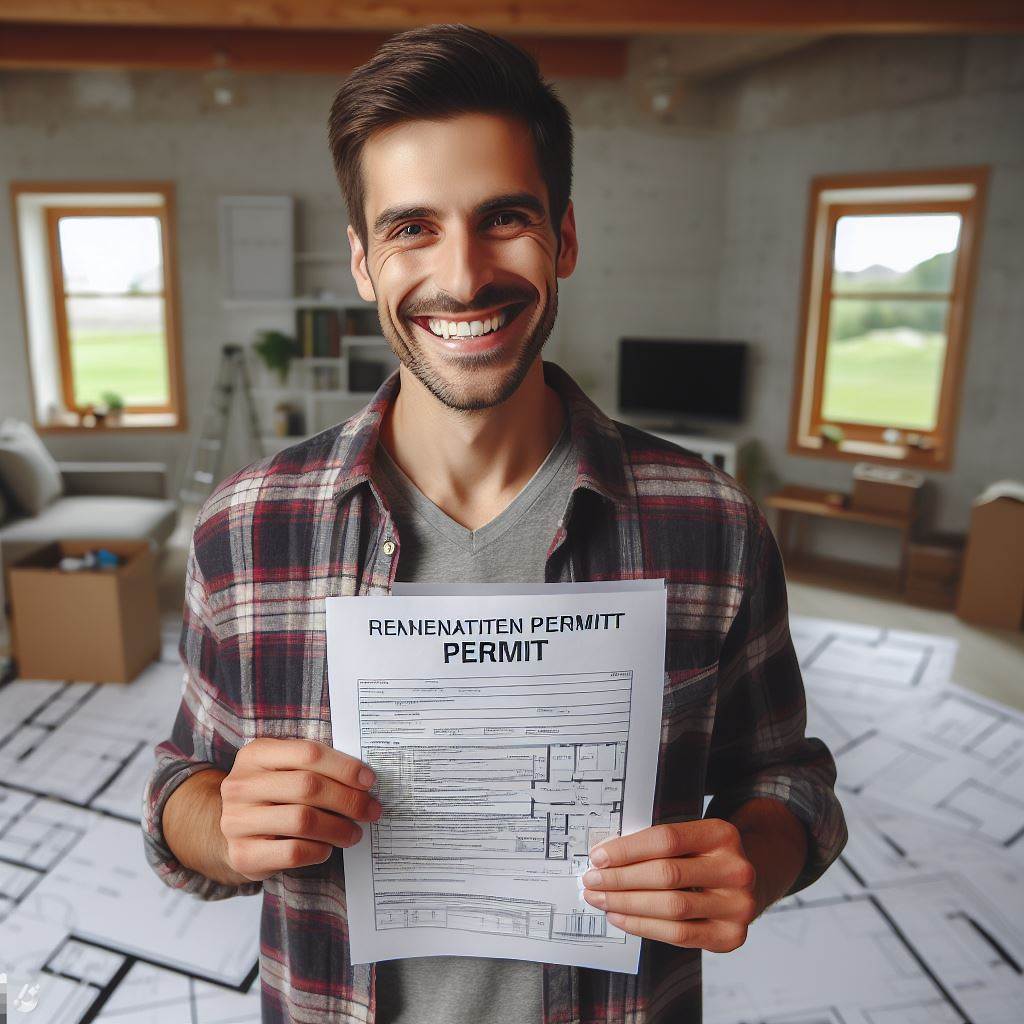Introduction
Historic buildings hold immense importance in preserving our cultural heritage and architectural legacy.
These structures provide a tangible link to our past, showcasing the craftsmanship and history of a bygone era.
Preserving these buildings is not only a responsibility but also an opportunity to learn from the past and inspire future generations.
However, navigating permits for historic buildings poses significant challenges.
Preservation authorities have strict regulations in place to ensure the authenticity and integrity of these structures are maintained.
Obtaining necessary permits requires thorough documentation, often including historical research, architectural plans, and compliance with preservation guidelines.
One of the key challenges faced is the intricate approval process.
Obtaining permits for alterations or renovations can be a lengthy and complex journey.
Multiple approvals may be required, involving various stakeholders such as local historical commissions, preservation societies, and planning departments.
Additionally, strict regulations can further complicate the permit process.
These regulations often dictate specific materials, techniques, and design elements that must be used when making alterations or additions to historic structures.
These constraints can require additional time and resources to ensure compliance while preserving the building’s historical character.
Moreover, finding skilled professionals well-versed in the nuances of historic preservation can be a daunting task.
Architects, engineers, and contractors with expertise in historic restoration are essential for successful permit navigation.
In fact, while preserving historic buildings is essential, the process of navigating permits for these structures presents numerous challenges.
From strict regulations to complex approval processes, it requires careful planning and collaboration with preservation authorities to ensure the preservation of our architectural heritage.
Understanding the significance of historic buildings
Cultural and historical value
Historic buildings hold an immense cultural and historical value to communities around the world.
They serve as tangible reminders of our past and represent the architectural and design styles of different time periods.
Economic impact
Preserving historic buildings is not only crucial for cultural reasons but also for their significant economic impact.
These buildings often attract tourists, contributing to local economies through increased tourism revenue and job opportunities.
Importance of preservation for future generations
Preserving historic buildings is essential because they provide a window into the past for future generations.
It allows us to learn from history and understand the cultural, social, and technological advancements of previous civilizations.
Listed below are some reasons why navigating permits for historic buildings is a crucial task:
Ensuring compliance with preservation laws
Navigating permits for historic buildings is crucial to ensure compliance with preservation laws.
These laws are in place to protect the historical significance of these structures and guide their maintenance and renovation.
Protecting the integrity of the building
Obtaining the necessary permits ensures that any modifications made to a historic building are done in a way that preserves its architectural integrity.
This protects its historical value and prevents irreversible damage.
Facilitating restoration and renovation projects
The permit process allows for the facilitation of restoration and renovation projects on historic buildings.
This ensures that any work done is in line with the building’s history and adheres to preservation guidelines.
Maintaining historical accuracy
By navigating permits, there are regulations in place to maintain historical accuracy during any changes made to a historic building.
This includes using appropriate materials and techniques that reflect the building’s original design.
Balancing preservation and modernization
Navigating permits for historic buildings involves striking a balance between preserving their historical value and incorporating modern necessities.
It allows for the integration of modern amenities while respecting the building’s original character and significance.
In fact, historic buildings hold immense cultural and historical value and play a significant role in the economy.
Navigating permits for these buildings is crucial in order to comply with preservation laws, protect their integrity, and provide future generations with a link to the past.
By understanding the significance of historic buildings and the importance of their preservation, we can ensure these architectural treasures continue to enrich our communities for years to come.
Read: Window Trends: 2024’s Clear Views
Researching the historical significance of the building
Researching the historical significance of a building is an important step in navigating permits for historic buildings.
Understanding the building’s history can help determine its architectural value and guide the preservation efforts.
Here are three key aspects to consider when researching the historical significance of a building:
Consulting local historical societies or preservation organizations
Local historical societies or preservation organizations are valuable resources in gathering information on the historical significance of a building.
These organizations often maintain archives and records that can shed light on the building’s past.
They may have knowledge about the building’s architectural style, previous owners, and any notable events associated with it.
By reaching out to these organizations, you can gain insights into the building’s historical context and significance.
Understanding the building’s architectural style
The architectural style of a building can provide clues about its historical significance.
Different architectural styles were popular during specific periods, and identifying the style can help determine the building’s age and historical context.
By studying architectural patterns, materials, and design elements, you can gain a deeper understanding of the building’s significance and its place within the broader historical narrative.
Previous permits or renovations
Previous permits or renovations can reveal important information about a building’s history.
By examining past permits, you can learn about any alterations or additions that were made to the building over time.
This knowledge is crucial when seeking permits for future renovations or alterations, as it helps determine the original intent and character of the building.
Understanding previous renovations can also indicate the level of historic integrity that remains and guide preservation efforts accordingly.
By thoroughly researching the historical significance of a building, you can lay the foundation for a successful permit application process.
This research provides a thorough understanding of the building’s value, both architecturally and historically, and allows for informed decision-making throughout the preservation and restoration process.
Furthermore, consulting local historical societies or preservation organizations ensures access to valuable resources and expertise.
These organizations often have extensive knowledge of local history and can provide guidance on navigating the permits and approvals needed for historic buildings.
Understanding the building’s architectural style is also essential, as it helps determine the appropriate preservation and restoration approaches.
By identifying the style, one can ensure that any renovations or alterations align with the original design intent, maintaining the building’s historical integrity.
Lastly, identifying any previous permits or renovations provides critical insights into the building’s past alterations.
This information can help inform decisions about future renovations and serve as evidence for the historical significance of the building when dealing with permit authorities.
In short, researching the historical significance of a building is a crucial step in successfully navigating permits for historic buildings.
Consulting local historical societies, understanding architectural styles, and identifying previous permits or renovations are all essential aspects of this research process.
By conducting thorough research, one can ensure the preservation and restoration efforts are sensitive to the building’s historical value and contribute to its long-term sustainability.
Read: Sustainable Flooring Options for 2024
Determining the type of permits required
Different types of permits for historic buildings
When it comes to historic buildings, there are various permits that may be required for different activities.
- Construction permits: These are necessary for any kind of new construction, renovation, or restoration work.
- Demolition permits: If you plan to tear down any part of a historic building, you must obtain this permit.
- Electrical, plumbing, or mechanical permits: These permits are needed for any changes or upgrades in these systems.
- Alteration permits: If you intend to make alterations that affect the historic character of the building, this permit is required.
- Sign permits: For any changes to signage on a historic building, you must obtain a sign permit.
Navigating federal, state, and local requirements
Understanding the different levels of government agencies involved is crucial when it comes to permits for historic buildings.
- Federal requirements: Some historic properties may be eligible for federal incentives, which come with their own set of requirements and permits.
- State requirements: Depending on the state, there might be additional permits and regulations specific to historic buildings.
- Local requirements: Local municipalities often have their own ordinances and permits for historic buildings.
It is essential to research the specific requirements at each level of government to ensure compliance.
Understanding the role of preservation boards or commissions
Preservation boards or commissions play a vital role in the permit process for historic buildings.
- Review and approval: These entities review applications for permits and determine their appropriateness for preserving historical integrity.
- Design guidelines: Preservation boards often provide design guidelines to help applicants meet the standards for historic preservation.
- Public input: Boards may hold public hearings to gather input from the community regarding proposed changes to historic buildings.
- Issuing certificates of appropriateness: Once a project is approved, the preservation board will issue a certificate of appropriateness.
Working closely with preservation boards is crucial to ensure compliance and obtain the necessary permits for historic buildings.
In essence, navigating permits for historic buildings requires an understanding of the various types of permits, as well as the federal, state, and local requirements involved.
Additionally, working closely with preservation boards or commissions is essential to ensure compliance and obtain the necessary approvals.
By following these steps, individuals and organizations can successfully navigate the permit process and contribute to the preservation of our historic buildings.
Read: Space-Saving Ideas for Urban Real Estate

Documenting the building’s condition and proposed changes
In order to navigate the permits needed for historic buildings, it is crucial to document the building’s condition and proposed changes.
This not only helps in the preservation process but also ensures compliance with regulations and permits.
Conducting a thorough inspection
The first step in documenting a historic building’s condition and proposed changes is to conduct a thorough inspection.
This inspection involves meticulously examining every aspect of the building, including its structure, foundation, walls, roofs, windows, doors, and other architectural elements.
The purpose of this inspection is to identify any existing damage, deterioration, or areas in need of repair or restoration.
It is important to involve professionals such as architects, engineers, and historians who have expertise in assessing historic buildings.
Their insights and knowledge can uncover hidden issues or provide recommendations for preserving the building’s historic integrity.
Documenting any existing damage or deterioration
Once the thorough inspection is complete, it becomes crucial to document any existing damage or deterioration present in the building.
This documentation should include detailed descriptions, measurements, photographs, and sketches to illustrate the extent of damage or deterioration.
It is important to note that accurate documentation is essential for obtaining permits, as it provides a basis for the proposed changes or renovations that might be required.
Additionally, this documentation plays a vital role in ensuring that the building’s historical significance is preserved while addressing any necessary repairs or modifications.
Proposed changes or renovations
After documenting the existing condition of the historic building, the next step is to outline the proposed changes or renovations.
This involves creating a clear and comprehensive plan that details the specific modifications or additions planned.
It is crucial to consider the historical value and significance of the building while developing these plans.
The proposed changes should respect and maintain the building’s architectural integrity, character, and historical features.
This can often involve collaborating with preservation architects, historians, and other professionals experienced in working with historic buildings.
These experts can provide guidance on appropriate materials, construction techniques, and design considerations that align with historic preservation standards.
The outline should include detailed drawings, blueprints, and specifications to demonstrate how the proposed changes will enhance or restore the building while adhering to relevant regulations and guidelines.
By thoroughly documenting the building’s condition and proposed changes, individuals can effectively navigate the permitting process for historic buildings.
This documentation provides a solid foundation for obtaining the necessary permits, while ensuring that the historical and architectural value of the building is preserved.
Working with professionals and experts in the field further enhances the chances of success in obtaining the relevant permits and ensures that the proposed changes maintain the building’s historical significance.
Navigating permits for historic buildings can be complex, but with a well-documented plan, the process becomes more manageable while safeguarding these valuable pieces of history for future generations.
Read: Biophilic Design: Nature in Modern Homes
Preparation of the permit application
Collecting required documentation and supporting materials
When preparing a permit application for a historic building, it is crucial to gather all the necessary documentation and supporting materials. This includes:
- Ownership documentation: Provide proof of ownership, such as a deed or title, to establish your authority over the property.
- Historical research: Conduct thorough research on the building’s history to highlight its significance and justify the need for preservation.
- Photographs: Take detailed photographs of the building’s exterior and interior, showcasing its original features and any damage that requires attention.
- Architectural plans: Create accurate architectural plans that outline the existing condition of the building and any proposed changes.
- Material samples: Collect samples of the original materials used in the construction of the building, which may need to be replicated during restoration.
Working with architects, contractors, or preservation specialists
Collaborating with professionals who specialize in historic preservation can significantly enhance the permit application process.
Architects, contractors, or preservation specialists can:
- Assess the building’s condition: Experts can conduct a thorough inspection of the building to identify any structural issues or architectural elements that require attention.
- Provide design expertise: Architects can develop plans that respect the building’s historical character while accommodating any necessary modern updates.
- Estimate project costs: Contractors can provide accurate cost estimates for the restoration or renovation project, which will be required for the permit application.
- Offer preservation advice: Preservation specialists can guide you through the process and ensure that all preservation standards and regulations are met.
Potential objections or concerns proactively
When dealing with historic buildings, it is common to face objections or concerns from various stakeholders.
To address these proactively:
- Engage the community: Foster open communication channels with the local community to understand their concerns and educate them about the importance of historic preservation.
- Involve experts: Seek the advice and support of professionals in the field who can help address any objections or concerns raised by preservation commissions or local authorities.
- Create a comprehensive proposal: Develop a well-structured proposal that outlines the benefits of preserving the building, addressing any objections raised and providing solutions.
- Consider compromises: Be open to making compromises that balance preservation goals with practical considerations raised by stakeholders.
- Attend public hearings: Actively participate in public hearings to present your case and demonstrate your commitment to preserving the building’s historical integrity.
By following these steps, you will have a well-prepared permit application for your historic building, increasing the likelihood of a successful outcome.
Remember, the key is to be thorough, collaborate with professionals, and proactively address objections or concerns.
Engaging with the community and stakeholders
Preserving historic buildings isn’t just about paperwork and permits; it’s a communal effort that thrives on engagement and collaboration.
To ensure a smooth journey through the permit process, fostering an open dialogue with the community and stakeholders is paramount.
Hosting Public Meetings or Informational Sessions
Public meetings or informational sessions serve as invaluable platforms for disseminating crucial information about the restoration or alteration of historic buildings.
By inviting community members, local authorities, and preservation enthusiasts, you create an opportunity for transparent communication.
Share insights into the project’s objectives, the significance of the building, and the proposed changes.
These gatherings also offer a chance for concerned citizens to voice their opinions and ask questions.
Addressing queries directly not only clarifies misconceptions but also builds trust within the community.
Make sure to use accessible language and visuals to ensure everyone comprehends the details discussed.
Soliciting Feedback and Addressing Concerns
Feedback is the lifeblood of successful historic preservation projects.
Actively seek input from the community throughout the permit process.
Establish channels for feedback, whether through online platforms, dedicated email addresses, or traditional suggestion boxes.
Encourage residents to share their thoughts, concerns, and suggestions.
Addressing concerns promptly is crucial to maintaining a positive relationship with the community.
If alterations are proposed that generate apprehension, consider modifications that balance preservation goals with community needs.
This iterative process not only refines the project but also demonstrates a commitment to shared decision-making.
Building Partnerships with Local Stakeholders and Organizations
Collaboration is key when navigating the complexities of historic building permits.
Forge partnerships with local stakeholders, such as historical societies, neighborhood associations, and preservation organizations.
These alliances can provide valuable insights, resources, and even volunteer support for your project.
Engaging with local organizations also ensures that your preservation efforts align with broader community goals.
It fosters a sense of shared responsibility for preserving the historical fabric of the area.
By involving these stakeholders from the early stages, you build a network of support that can ease the permit process and enhance the overall success of the project.
In a nutshell, while permits may be bureaucratic necessities, community engagement is the soul of historic preservation.
By hosting meetings, seeking feedback, and building partnerships, you not only navigate the permit process effectively but also enrich the entire journey with a collective commitment to preserving the past for future generations.
Navigating the review and approval process
Timelines and deadlines for permit review
- Understanding and adhering to the specific timelines and deadlines for permit review is crucial.
- Missing deadlines can cause delays and potentially jeopardize the approval of permits for historic buildings.
- Identify the required documents and gather all the necessary information in a timely manner.
- Submitting the complete permit application package ahead of the deadline ensures a smoother review process.
- Stay in constant communication with the preservation office to track the progress of your permit application.
Responding to requests for additional information
- Be prepared for the possibility of the preservation office requesting additional information to clarify your permit application.
- Respond promptly to any such requests, ensuring that you address all concerns raised.
- Provide any requested documentation or data promptly to expedite the review process.
- Collaborate with the preservation office to resolve any issues or provide further clarification if needed.
- Keep a record of all communication and ensure that documentation is organized and easily accessible.
Attending preservation board meetings or public hearings
- Make it a priority to attend preservation board meetings or public hearings related to your permit application.
- Prepare a concise and persuasive presentation explaining the significance of your historic building.
- Highlight the proposed changes or renovation plans while emphasizing the preservation of its original character.
- Be receptive to questions and feedback from board members or the public, addressing concerns effectively.
- Engage in constructive discussions and demonstrate your commitment to preserving the building’s historic integrity.
By following these crucial steps, you can confidently navigate the review and approval process for permits of historic buildings.
Timeliness, thoroughness, and effective communication will greatly increase your chances of obtaining the necessary permits while preserving the unique heritage of these buildings.
Remember, each decision made during the approval process plays a vital role in safeguarding the integrity of our historic treasures for future generations.
Overcoming challenges and setbacks
Preserving the integrity of historic buildings through the permitting process is often a delicate dance, requiring patience, strategic thinking, and resilience.
In this section, we delve into overcoming challenges and setbacks that may arise during the journey of navigating permits for historic buildings.
Dealing with Objections or Opposition
In the realm of historic preservation, objections and opposition can emerge from various stakeholders, including community members, local authorities, or even preservation purists.
When faced with objections, it’s crucial to adopt a diplomatic approach.
Engaging in open communication and actively listening to concerns allows for a more nuanced understanding of the issues at hand.
Moreover, organizing community meetings or workshops can provide a platform to address concerns directly, fostering a sense of shared responsibility for preserving the cultural heritage.
Alternative Solutions or Compromises
Flexibility is key when navigating the intricate web of historic building permits.
When met with roadblocks, consider exploring alternative solutions or compromises that still honor the building’s historical significance.
This might involve adjusting renovation plans, incorporating additional safeguards, or finding a middle ground that balances preservation goals with practical considerations.
Collaborating with architects, historians, and preservation experts can offer fresh perspectives and innovative solutions that satisfy both regulatory requirements and community expectations.
Seeking Legal or Professional Advice if Necessary
Navigating the legal landscape of historic preservation can be complex.
If challenges persist, seeking legal or professional advice becomes imperative.
Consult with attorneys specializing in historic preservation law to gain insights into the specific regulations governing your project.
Their expertise can guide you through potential legal obstacles, ensuring compliance with all necessary standards while safeguarding the historical integrity of the building.
Additionally, enlisting the support of preservation professionals, such as architects with experience in heritage conservation, can provide invaluable guidance in developing strategies to overcome setbacks.
Basically, overcoming challenges in the permitting process for historic buildings requires a combination of effective communication, adaptability, and, when necessary, seeking expert advice.
By approaching objections with an open mind and exploring alternative solutions, we can ensure the preservation of our cultural heritage while navigating the intricate landscape of permits and regulations.
Conclusion
Preserving the architectural heritage of historic buildings requires a delicate balance between progress and conservation.
In this post, we’ve delved into the intricate process of navigating permits for historic structures, emphasizing the need for responsible and informed decision-making.
Throughout this exploration, we’ve highlighted the critical importance of understanding the historical significance of a building before initiating any renovation or alteration.
The regulatory landscape surrounding historic preservation is complex, with local, state, and federal regulations often interweaving.
As discussed in earlier chapters, conducting thorough research to identify a building’s historical status is fundamental to determining the applicable permits.
We’ve emphasized the significance of collaboration between property owners, architects, and preservation authorities.
Engaging in open communication fosters a shared vision for the preservation of a building’s unique character while meeting the demands of modern functionality and safety standards.
To navigate the permitting process responsibly, stakeholders must be committed to a meticulous and informed approach.
This involves consulting with preservation professionals, architects, and historians who specialize in the preservation of historic structures.
By fostering a collaborative atmosphere, we can ensure that the spirit of the past is preserved while adapting buildings to meet contemporary needs.
Educating stakeholders about the potential consequences of hasty decisions and the long-term benefits of thoughtful preservation is crucial.
This post has underscored the importance of due diligence in securing the appropriate permits, acknowledging that this process is a fundamental step toward sustaining our architectural legacy.
In the end, the preservation of historic buildings is not merely a legal obligation but a cultural responsibility.
Our architectural heritage reflects the stories of communities and the evolution of society.
By navigating permits with care and consideration, we contribute to the legacy that will be passed down to future generations.
In the face of rapid urban development, preserving our architectural heritage is a commitment to the cultural richness and diversity that defines us as a society.
May our efforts to navigate permits for historic buildings be guided by a profound respect for the past, ensuring that our architectural treasures endure for generations to come.




